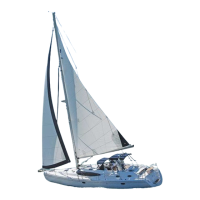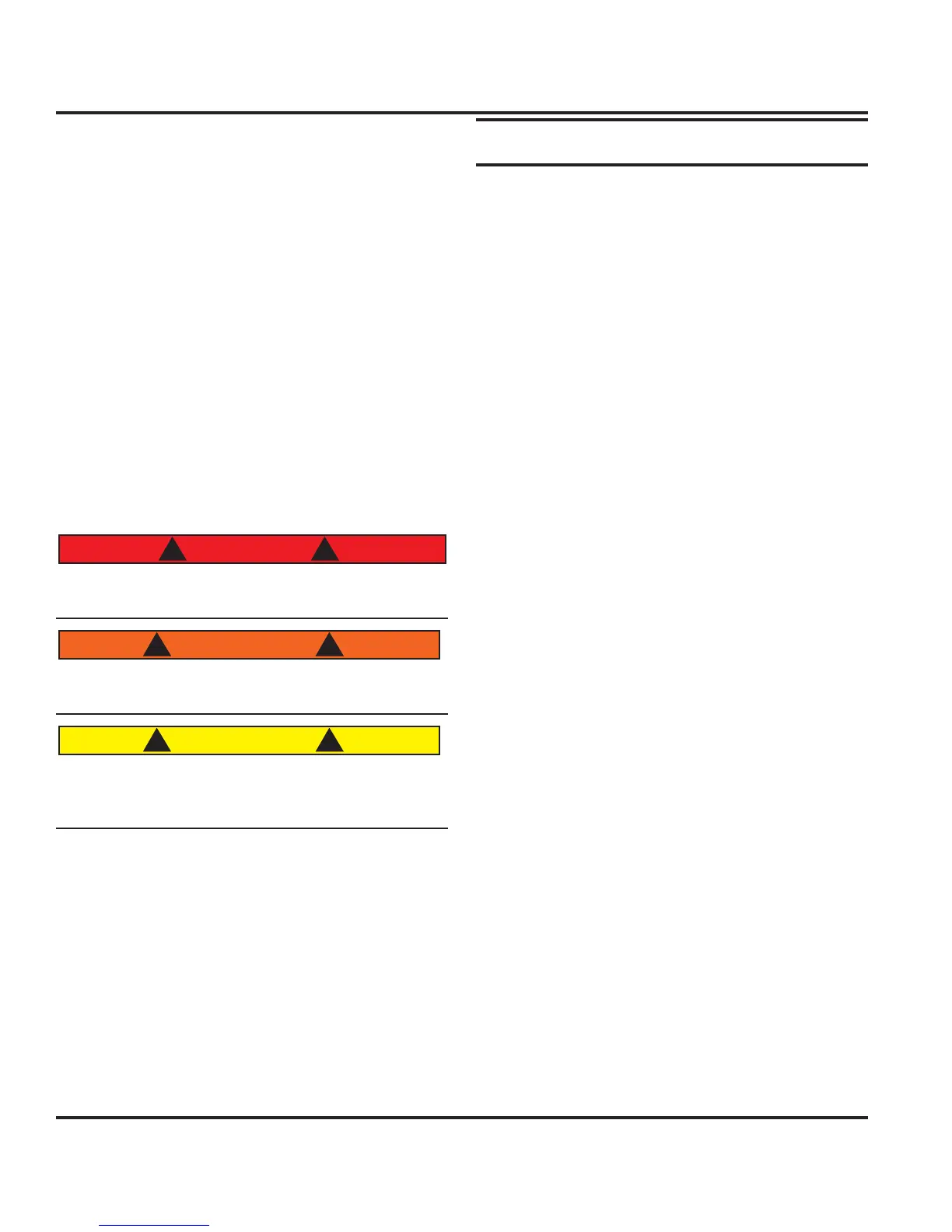nt
r
• Boatin
Safet
4.
As
ou read
our owner’s manual, please note hazard
warnin
s which alert
ou to sa
et
and precautions and
unsafe conditions or operatin
procedures. We have
included these warnin
s because we are concerned
about
our sa
et
and the sa
et
o
our passen
ers.
azard statements
enerall
have five parts
1. The hazard s
mbol
2. A si
nal word which indicates the severit
o
the haz-
r
. A concise description o
the hazard.
4. The results of i
norin
the hazard.
.
teps
or avoidin
the hazard
The three si
nal words which indicate the severit
o
a
hazard are dan
er, warnin
, and caution. The meanin
s
the
conve
are as follows
DANGER
! !
Calls attention to immediate hazards that will result in
severe in
ur
or death
WARNING
! !
dentifies hazards or unsafe
ractices that could re-
su
t
n persona
n
ur
or
eat
CAUTION
! !
ndicates hazards or unsafe
ractices that could re-
sult in minor personal in
uries, propert
dama
e, o
omponent
ama
e
Also included in this manual are owner advisor
state-
ments identified as "Im
ortant" or "Note". Unlike the
hazard communication statements, the
alert
ou to con-
ditions a
ectin
equipment operation, maintenance, and
serv
c
n
pract
ces.
Important: This is a general advisory statement or procedure
intended to prevent damage to the equipment or associated
component.
Note: This is a general advisory statement relating to equip-
ment operating and maintenance procedures. Its intent is to call
attention to information more important than normal text.
.1 Safet
Boatin
safet
and the safet
of
our passen
ers are
our responsibilit
. You should
ull
understand and
become familiar with the operatin
and safet
procedures
an
recaut
ons
n t
s manua
an
t
e ot
er manua
s
n
the owner’s packet be
ore
ou launch
our new boat
.1.1 Safe O
eration
Followin
is
eneral information about safe operation
Keep
our boat and equipment in sa
e operatin
condi-
tion. Inspect the hull, en
ines, safet
equipment, and all
oat
n
ear re
u
ar
Important: Federal law requires you, the owner, or operator
to provide and maintain safety equipment on your new boat.
Consult your Coast Guard, state, and local regulations to
ensure your boat has all required safety equipment on board.
Additional equipment may be recommended for your safety and
that of your passengers. Make yourself aware of its availability
and use.
BE VERY CAREFUL when fuelin
our boat. Be sure
ou
now the capacit
o
our boat’s
uel tank and the amount
f fuel
ou use when operatin
at frequentl
used en
ine
speeds
RPMs
.
Alwa
s know all the area's on the boat, know the nautical
terms for the different areas of
our boat.
n the followin
pa
e, at the end o
this chapter we show
ou a
eneral
la
out o
these terms and illustrate the areas that ma
be
f importance to
ou
ake sure
ou have enou
h
uel on board
or anticipated
ruisin
requirements. In
eneral, use 1/3 of
our suppl
to reach
our destination and 1
3 to return. Keep 1
3 in
reserve
or chan
es in
our plans due to weather or other
r
m
t
n
.
Note: Your generator supply line is located higher on the aux-
iliary fuel tank than the engine’s supply lines. This is for your
safety in that your generator cannot deplete your fuel supply
should it ever be left running.
Be sure lifesavin
and fire extin
uishin
equipment is
n board. This equipment must meet re
ulator
a
enc
standards, and it should be noticeable, accessible, and
in a safe operatin
condition. Your passen
ers should
now where this equipment is and how to use it.

